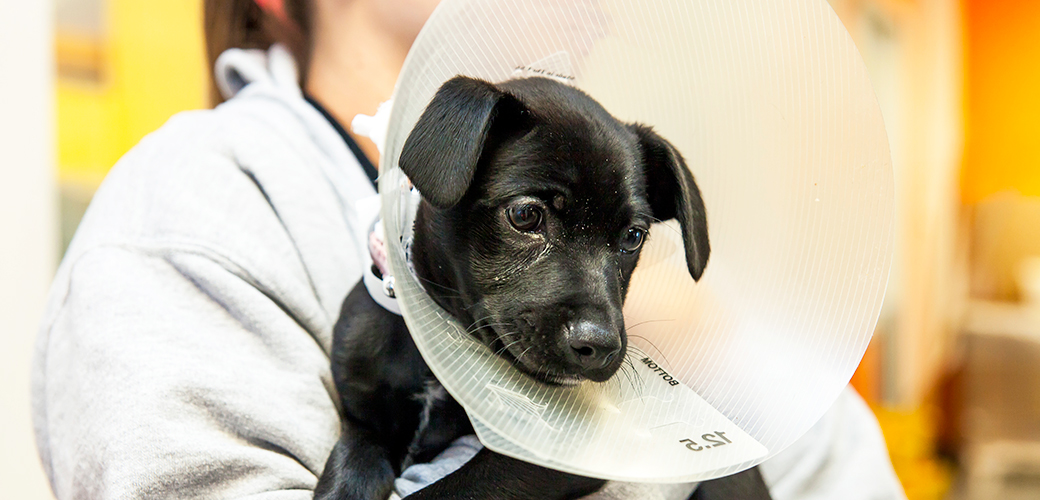The Importance of Spaying and Neutering
Spaying and neutering pets is not just a responsible choice for pet owners; it has a broader impact on the community and contributes to public health and safety. Let's explore why these procedures are vital.
For the Community: Spaying and neutering reduce the number of stray animals on the streets, which can pose safety risks and public health concerns. Stray animals are more likely to spread diseases, get into trash, and cause accidents. Additionally, reducing the stray animal population lowers the burden on animal shelters and rescues, enabling them to provide better care for the animals they already have.
For Pet Health: These procedures offer various health benefits to pets. Spaying eliminates the risk of uterine infections and significantly reduces the likelihood of ovarian and uterine tumors in females. Neutering prevents testicular cancer in males and minimizes aggressive behaviors, reducing the risk of injuries due to fights.
Ethical Considerations: Beyond practicality, there's an ethical imperative to control pet populations responsibly. Euthanizing healthy but homeless animals is both tragic and avoidable through widespread spaying and neutering.
Legal Aspects: Some local governments have ordinances requiring pet owners to spay or neuter their pets to combat overpopulation. Non-compliance can result in fines or other legal consequences.
Understanding the Medical Procedures
Understanding what spaying and neutering involve can help pet owners make informed decisions. Let's delve into the procedures and address some common myths.
What Happens During Spaying and Neutering: Spaying is the surgical removal of female reproductive organs, and neutering is the removal of a male's testicles. Both procedures are performed under anesthesia, are minimally invasive, and usually require only a short stay at the veterinary clinic.
Myths and Misconceptions: One of the most prevalent myths is that spaying or neutering can cause an animal to become overweight. In reality, weight gain is typically due to overfeeding and lack of exercise. Another misconception is that the procedure will change the pet's personality; in most cases, the only behaviors that change are those specifically linked to mating.
Veterinary Advancements: Advances in veterinary science have made spaying and neutering safer than ever. Modern anesthetics and surgical techniques minimize the risks associated with these procedures.
What is Spaying?
Spaying is a veterinary surgical procedure performed on female animals to remove the reproductive organs, making them incapable of becoming pregnant. Here's what you should know:
The Procedure: Commonly known as ovariohysterectomy, this involves the removal of the uterus, ovaries, and fallopian tubes. The procedure is conducted under general anesthesia.
When to Spay: The optimal time for spaying your pet varies depending on the species and breed. However, it is generally recommended to have it done before the first heat cycle, often around six months of age.
Health Benefits: Spaying has several health benefits, such as eliminating the risk of uterine infections and reducing the risk of ovarian and uterine tumors.
Behavioral Changes: Spaying may also reduce certain undesirable behaviors, such as howling, urination marking, and escape attempts during the heat cycle.
What is Neutering?
Neutering is the surgical removal of a male animal's testicles, rendering them incapable of fathering offspring. Below is what you should know:
The Procedure: Conducted under general anesthesia, neutering involves the removal of the testicles through a small incision. It is a relatively quick and straightforward surgery.
When to Neuter: The recommended age for neutering varies among species and breeds, but six months is often considered a suitable age for many animals.
Health Benefits: Neutering has several health advantages, such as reducing the risk of testicular cancer and benign prostatic hyperplasia (enlarged prostate).
Behavioral Changes: Neutering can lessen undesirable behaviors in males, such as aggressive tendencies, roaming, and marking territory with urine.
Post-Surgery Care
After spaying or neutering your pet, proper post-operative care is crucial for a smooth recovery. Here's what you should keep in mind:
Recovery Time: Recovery typically takes 7-10 days for both spaying and neutering procedures. Your pet will likely be sleepy for the first couple of days due to anesthesia.
Medication: Your veterinarian may prescribe medication for post-operative pain. Ensure you follow the medication schedule as advised.
Physical Activity: Limit your pet's physical activity during the recovery period to prevent complications. Avoid running, jumping, or strenuous play.
Monitor the Surgical Site: Check the surgical site daily for signs of infection such as redness, swelling, or discharge. Contact your vet if you notice any complications.
Follow-Up: A follow-up visit to the veterinarian is usually recommended to remove stitches (if not dissolvable) and to assess the healing process.
